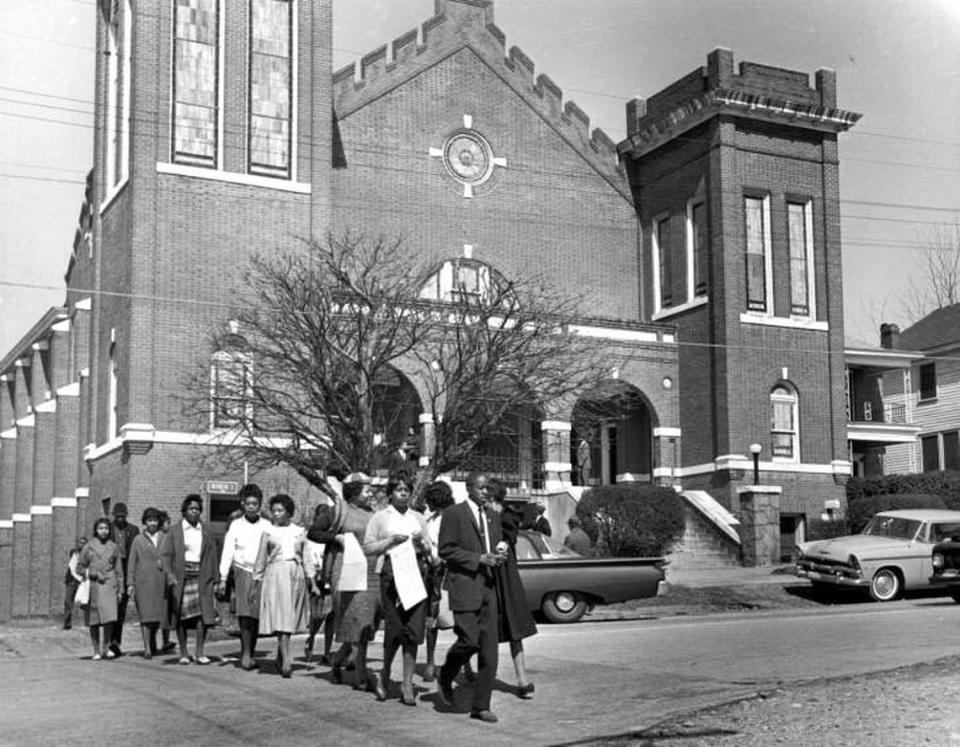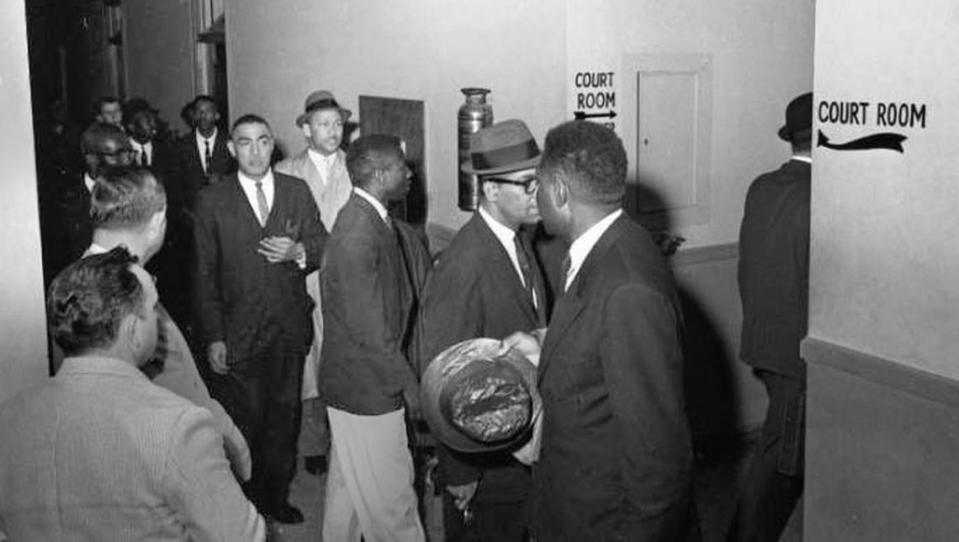Whites called them ‘outside agitators’ but in 1961 young SC Black people made history
On March 2, 1961, white Columbia police made a mass arrest on State House grounds of nearly 200 Black high school and college students who were peacefully marching to protest South Carolina’s longstanding segregation laws.
The students were packed off to jail. The charge: breach of peace.
But that day, they also won a place in the history books for their bravery and in the law books for the resulting landmark U.S. Supreme Court decision, Edwards v. South Carolina. It was a decision that has protected peaceful demonstrators across the nation ever since.
“Sixty years ago, I was a 16-year-old high school student from the venerable Sterling High School in Greenville ... and I was among over 100 students who came to Columbia on that day to put an end to the rancid desegregation efforts that were taking place at that time,” Rep. Leola Robinson-Simpson, D-Greenville, told a downtown Columbia crowd on Tuesday. She was one of those arrested that day.

Robinson-Simpson was a featured speaker at Tuesday’s gathering across from the State House commemorating the 60th anniversary of the 1961 march and the historic Edwards v. South Carolina decision. A historic marker was unveiled. Also unveiled was a six-foot high gray and black monument, shaped something like an obelisk, entitled “We Shall Not Be Moved” with the names of all 190 students and their adult advisors who were arrested that day. The monument’s exact placing near the intersection of Gervais and Main streets has yet to be determined.
Tuesday’s event was also a time to take stock of how far South Carolina has come.
South Carolina’s rigid segregation laws from about 1895 to the 1960s, now hard to imagine, prohibited blacks from entering public libraries, parks, most beaches, restaurants, bathrooms, buses and from going to public schools with white children and whites-only colleges like Clemson. Blacks who got out of line were subject to smear campaigns, losing their jobs, being harmed or even killed.
That’s why having nearly 200 Black people showing up to walk outside South Carolina’s State House where the then all-white Legislature and then-Gov. Fritz Hollings held sway, was a big deal. There had been sit-ins and marches around the state, but nothing like this challenge by young people at the state’s most visible seat of power.
“When they gathered here 60 years ago, they were called ‘outside agitators,’ even though they were from Greenwood, Greenville, Charleston, Columbia and Newberry,” University of South Carolina professor Bobby Donaldson told the crowd. Donaldson, head of the USC’s Center for Civil Rights History and Research, moderated the hour-long event Tuesday.

Columbia Mayor Steve Benjamin also spoke, saying, “We know indeed the sacrifices of seemingly ordinary people who did extraordinary things that made our lives today, incredibly possible.”
The protesters that day had a secret weapon: an African American lawyer named Matthew Perry.
Perry, a World War II U.S. Army veteran, had been excluded from the all-white University of South Carolina School of Law. He earned a law degree at S.C. State College and then got a law license. But he was to prove, by the landmark cases he was to win in the U.S. Supreme Court, as savvy as just about any white South Carolina lawyer.
In all, Perry was to participate in seven successful appeals to the Supreme Court that overturned convictions of more than 7,000 people involved in racial protests, according to former journalist and legal historian Jack Bass in the book “Matthew J. Perry: The Man, His Times and his Legacy,” a collection of essays about Perry.

In Edwards v. South Carolina, Perry orchestrated the cases in city court in a way that when the case landed in the U.S. Supreme Court, the justices were easily convinced that Columbia police had illegally arrested the Black students.
“Attorney Perry laid the foundation in the trial record, which allowed the U.S. Supreme Court to reverse,” former S.C. Chief Justice Jean Toal told the gathering Tuesday. In 1961, Toal was a Dreher High School student who witnessed both the mass arrests of Black students at the State House and some of the student trials.
Toal describes Perry, who later became South Carolina’s first Black federal judge and who died in 2011, as “an imposing figure, tall, slender, conservatively and impeccably dressed with a deep, melodious voice. His command of the language was a thing of beauty. His command of the law was complete and powerful. “
In the city courtroom, Perry quickly got the state’s witnesses to concede the students were orderly, did not curse, did not threaten anyone or block public streets and in fact, they sang patriotic and religious hymns such as America the Beautiful and “We shall not be moved,” Toal told the gathering.
Moreover, Perry showed that the state arrested the students not because of what the students did, but because a group of hundreds of white onlookers appeared to pose a threat to the peaceful students — and the police arrested none of the onlookers.
“History was made that day by those brave students,” Toal said. “And by that brave attorney Matthew Perry.”
When the Supreme Court ruled on the case in 1963, the decision said that “South Carolina infringed the students’ constitutionally protected rights of free speech, free assembly and freedom to petition for redress of their grievances,” according to the late Robert Moore, a Columbia College historian, in the Perry book.
The Edwards decision also contained a ringing line: “The 14th Amendment does not permit a State to make criminal the peaceful expression of unpopular views.”
That amendment says in part that no State shall “deprive any person of life, liberty, or property, without due process of law” and shall not deny to any person “equal protection of the law.”
Also speaking was the lead plaintiff in Supreme Court decision, the Rev. James. Edwards, now 81, told the crowd that “God was in that moment. Because without him we would have not have made it.”
Another South Carolinian arrested that day was U.S. Rep. Jim Clyburn, a Columbia Democrat, then 20 years old. Clyburn was unable to attend Tuesday’s events because he was in Washington in Congress.

